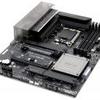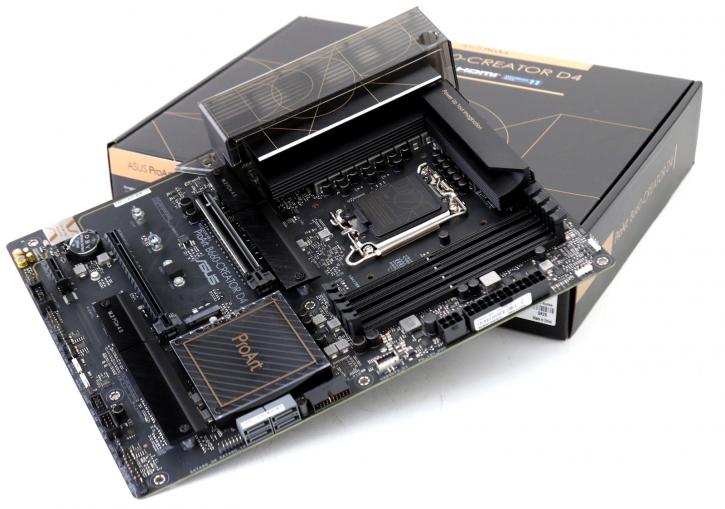Final Words & Conclusion
Final Words
We utilized a DDR4 3600 CL16 kit for this review (slightly crisper timing than usual Cl18, and it's almost annoying to see how close performance is compared to a DDR5 5200 MHz CL40 configuration). What a fun motherboard for the money, though! A lot can be said and stated about Z690 versus B660, but for a B series motherboard, you'll get plenty of features as long as you do not plan to tweak your processor a lot. BTW you can still tweak it, but with a different approach. That said, any non-K model processor will be absolutely brilliant on B660. Even the 200 USD Core i5 12400 processor hauls ass in gaming performance. The Mortar on the other end has a sophisticated power phase design, you could add in a Core i9 12900 processor just as well and be done with it. So what will you be lacking with B660 then? Well, tweaking support, most manufacturers will drop PCIe 5.0 support in favor of PCIe 4.0, and then the interconnect bandwidth is halved from x8 towards x4 lanes. That latter one however still is a PCIe Gen 4.0 bi-directional link, which will offer the chips a truckload of bandwidth. So really, even with B660, you're 95% there for all your common needs and requirements. I mean sure, 5 M2 slots are nice, and multiple Ethernet links as well, but do you really need it? The tradeoff as such can be nicer, this motherboard is expected to retail just over 200 USD, pair it with the Core i5 12400 as shown today and you'll still be amazed by the performance. The caveat, however, will be DDR5 memory, it's hard to get and thus expensive, making the platform overhaul perhaps too expensive. Being on the lookout for a DDR4 board would be my advice.
Energy efficiency
Added chips, RGB, and BIOS configuration are a bothersome factor when testing stuff like this. the Steel legend performs quite well with comes back at 50Watts power draw in IDLE. Under total stress on the processors, the system comes back at roughly 325 Watts, and overclocked, we passed 450 Watts. Energy efficiency for this motherboard and processors as such are average at best. Keep that in mind with your cooling choice, as processor wattage usually is 1:1 in line with cooling performance. We recommend an LCS.
Noteworthy is that Intel no longer provides a total design power (TDP), instead referring to a 'processor base power' of 125W and a 'maximum turbo power' that is significantly greater. Intel, at the very least for the overclockable K processors, has ended the confusion that the PL1 and PL2 power constraints produced in previous generations with this announcement. The current norm for these CPUs is that they can boost indefinitely unless the PC maker (or, in the case of self-build, the user) decides otherwise to keep within the limitations of the cooling and power supply systems.
The conclusion
The ASUS ProArt B660-Creator D4 motherboard lacks some of the capabilities found on its elder sister, the ProArt Z690-Creator WiFi, but this does not rule it out as a viable option. On the contrary, the ProArt B660-Creator D4 is the best option for creating a functional system in most circumstances - when it makes no sense to overpay for the Intel Z690 chipset. The vast majority of budget-conscious do-it-yourselfers can consider the B660 chipset. In comparison to the Z690, it lacks the ability to overclock the CPU but retains the ability to overclock the RAM. But go max on the all-core, and extend the PL2 limit to max or BLCK, and there you'll see a big tweak. There are no issues with processor support, including the power subsystem's temperature. DDR4 memory is currently substantially less expensive than DDR5 memory; however, with a frequency of 3600 MHz and timings of CL16-22-22-42 functions as if it were formed in DDR5 memory with a frequency of 5200 MHz. If you are not contemplating DDR5, you do not want a big number of USB 3.2 Gen2 connections, but DDR4 and three M.2 connectors are plenty, so the option is clear. ASUS ProArt B660-Creator D4 is a worthy foundation for a high-performance work machine in its price range. Currently, it's priced at 230 USD/EUR. That's slightly higher than it should be as it does lack WIFI. Overall, the platform felt stable and refined; we can't add anything else here because that is a true fact. ASUS has created an attractive product here.
- Sign up to receive a notification when we publish a new article
- Or go back to Guru3D's front page.



